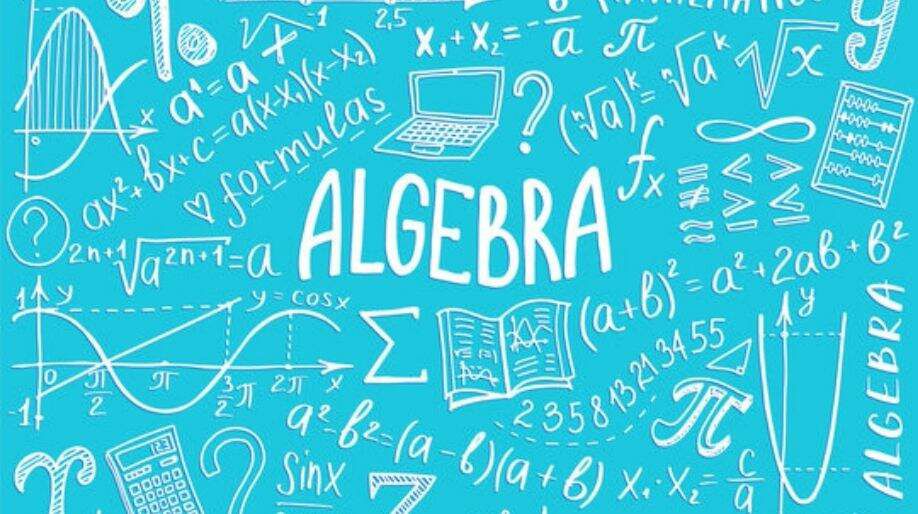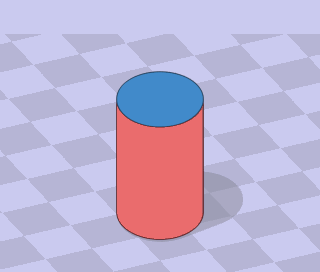What is Algebra? We all have been listening to this word from our childhood and somehow we are really afraid of this. But let me tell you Algebra is nothing but a study of mathematical symbols and here we are going to learn about the algebraic expressions and properties. And it’s so easy to understand that after learning you are going to love it. Let us learn more about Algebra.
Algebra is the study of mathematical symbols and the rules for manipulating these symbols to obtain the desired results.
- In the most basic way Algebra is the branch of mathematics in which we study about the use of letters in mathematics.
- Use of letters will allow us to write rules and formulas in a general way.
Variables
A variable is any symbol basically letter only, which has no definite value. In different cases the value of the variable changes.
- It is strictly to be remembered the value of the variable is never fixed.
Example 1: Find the value of the variable p if p is natural number.
Solution: p is natural number which means it can take any value 1, 2, 3, 4, 5…………. And hence we cannot predict any fixed value of the variable p.
Let us now understand why and how do we use variables
Suppose Aman has 5 pencils and Raju has 10 pencils. When Aman has 10 pencils, Raju has 15 pencils. When Aman has 15 pencils, Raju has 20 pencils and so on.
The above case can be written in an expression form as:
Pencils of Raju are always 5 more than that of Aman.
Pencils of Raju = Pencils of Aman + 5
If we assume the number of pencils of Aman to be x.
We can write the expression and find out the pencil of Raju
Pencils of Raju = x + 5.
Here the variable x is the number of pencils of Aman and hence can take nay value from 1, 2, 3, 4, 5………….
This is the beauty of algebra in mathematics; it reduces the complexities of algebraic expressions.
Example 2: Cadets are marching in a parade. There are 5 cadets in a row. What is the rule which gives the number of cadets, given the number of rows? (Use n for the number of rows).
Solution: Let us assume that number of rows is n and hence n can take any value from 1, 2, 3, 4……….
If there are 5 cadets in 1 row,
Therefore if number of rows is n then number of cadets will be
5n.
Use of Variables
- Perimeter of Square
We all know that perimeter of Square = Sum of all sides
Perimeter = a + a + a + a = 4a.
Here the variable a helps us to make a generalize rule or formula for finding the perimeter of a square with side a and here a is a variable so it can take any value from 1, 2, 3, 4……….
- Perimeter of Rectangle
We all know that perimeter = Sum of all sides
Perimeter = l + b + l + b = 2(l + b).
Here the variable l and b are the length and breadth of the rectangle.
Here, both l and b are variables. They take on values independent of each other that is the value one variable takes does not depend on what value the other variable has taken.
Rules from Arithmetic
1) Commutativity of Addition
Commutativity means to interchange and according to this property
a + b = b + a
Here a and b are the variables.
Example 3: Examine the rule of commutativity of addition for two numbers 3 and 4.
Solution: Here we get that a =3 and b= 4
a + b = 3 + 4 = 7.
b +a = 4 + 3 = 7.
Since a + b = b + a
Hence the rule is verified.
2) Commutativity of Multiplication
Using variables a and b as in the case of addition, we can express the commutativity of multiplication of two numbers as
a × b = b × a
- Distributivity of numbers
Let a, b and c be three variables, each of which can take any number. Then the following expression shows the distributive property:
a × (b + c) = a × b + a × c
Expression with Variables
At our initial stages we all have formed certain expressions with numbers for the addition, multiplication, subtraction or division. Here we will learn how to make and deal with the expressions with variables.
- We know that variables can take different values; they have no fixed value. But they are numbers. That is why as in the case of numbers, operations of addition, subtraction, multiplication and division can be done on them.
We can make unlimited expression with the help of variables and can perform any arithmetic operations in it and on assigning certain values to the variables we can find out the value of the expression also.
Example 4: Form any expression using the variable x and find the value of the expression at x=5.
Solution: We can make any expression and let it be
4x – 15 = 0.
Hence on putting the value x = 5, get the value of expression as
4 x 5 – 15 = 20 – 15 = 5.
Equation
Any equation is a condition on a variable and is satisfied only for a definite value of the variable.
An equation has an equal sign (=) between its two sides. The equation says that the value of the left hand side (LHS) is equal to the value of the right hand side (RHS). If the LHS is not equal to the RHS, we do not get an equation.
For example the expression 2n is greater than 10, i.e. 2n > 10 is not an equation, it is a statement.
Also, the expressions (x – 8) > 15 or (x + 3) < 11 are not equations, they are just statements.
Now, let us consider 9 – 2 = 7
There is an equal sign between the LHS and RHS and neither of the two sides contains a variable. Both contain numbers. We may call this a numerical equation. Usually, the word equation is used only for equations with one or more variables.
The value of the variable in an equation which satisfies the equation is called a solution to the equation.
Here we are going to use trial and error method to find the solution of an equation as shown in the example.
Example 5: Find the solution of the equations:
- a) m - 5 =2
- b) p – 3 = 5
Solution: m - 5 = 2 is an equation in the variable m.
On randomly putting some values in m like m = 9, m = 7,
We get 9 – 5 = 4 which is not equal to 2.
On putting m = 7 we get 7 – 5 = 2 and hence we get that m = 7.
Similarly we can find p = 8 for the second equation.
Practice Questions on Algebra
Q1) Which of the following is an equation?
- a) 17 = x + 7 b) (t – 7) > 5
- c) (7 × 3) – 19 = 8 d) 5 × 4 – 8 = 2 x
Q2) The length of a rectangular hall is 4 mete less than 3 times the breadth of the hall. What is the length, if the breadth is b meters?
Q3) A bus travels at v km per hour. It is going from Delhi to Agra. After the bus has travelled 5 hours, Agra is still 50 km away. What is the distance from Delhi to Agra? Express it using v.
Q4) The side of an equilateral triangle is shown by l. Express the perimeter of the equilateral triangle using l.
Recap
- A variable takes on different values; its value is not fixed. The length of a square can have any value. It is a variable. But the number of angles of a triangle has a fixed value 3. It is not a variable.
- A variable allows us to express relations in any practical situation.
- An equation is a condition on a variable. It is expressed by saying that an expression with a variable is equal to a fixed number, e.g. x – 3 = 10.
- An equation has two sides, LHS and RHS, between them is the equal (=) sign.
- The LHS of an equation is equal to its RHS only for a definite value of the variable in the equation. That definite value of the variable satisfies the equation. This value itself is called the solution of the equation.


























